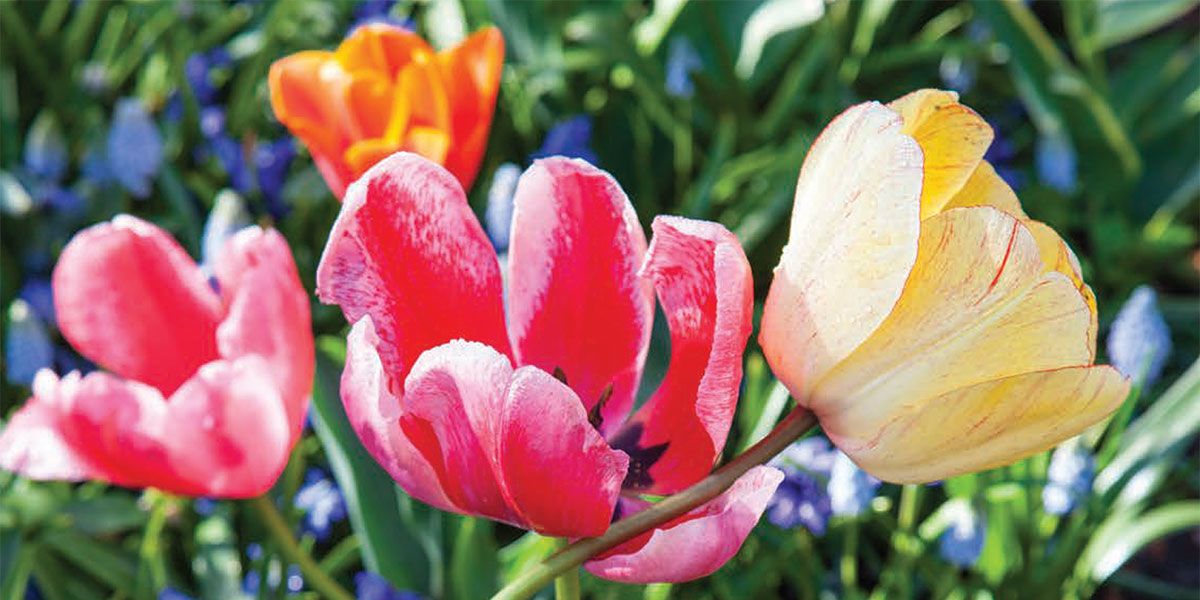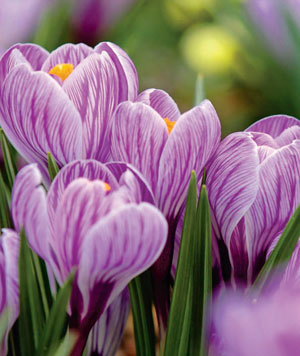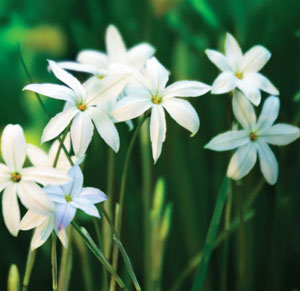Plant Now, Bloom Later | Fall Planting for Spring Flowers

While visualizing next spring’s garden may be the furthest thing from your mind right now, fall is the time to plan and execute your spring flower plans. Most of spring’s early bloomers, like crocus, daffodils and tulips, are grown from a bulb— an onion-shaped mass that contains everything a plant needs to burst forth in bloom. Planted in the fall, bulbs need a short time in warm soil to help establish their roots before requiring a chilly period of some length to bloom. Thankfully, this leaves the window for planting them fairly wide. You may visit a garden center to find perennial flowers and plants that you want to plant in your garden.
 Planting bulbs is perhaps one of the easiest garden tasks there is. They don’t require much in terms of soil beyond it being well drained, so there’s no need to dig up an entire bed and amend it. Because many of these blooms are active before trees leaf out, they can be planted almost anywhere, regardless of their preferred light requirements. They simply need a hole dug about three times their length, which can even be done with a hand-held drill and an attachment called a power planter auger. You can drop some compost or bulb food in the hole before dropping the bulb in, cover it with soil, and voila! You’re set for next spring. You’ll want to water while planting, and if it’s a dry fall, water them from time to time to encourage root growth, but otherwise, you’re done. The hardest part of planting bulbs might just be knowing which side up to plant. Thankfully, the bigger the bulb, the easier that is to sort out: Plant with the pointy side up and the wider part on the bottom. When in doubt, plant the bulb on its side and nature will work it out.
Planting bulbs is perhaps one of the easiest garden tasks there is. They don’t require much in terms of soil beyond it being well drained, so there’s no need to dig up an entire bed and amend it. Because many of these blooms are active before trees leaf out, they can be planted almost anywhere, regardless of their preferred light requirements. They simply need a hole dug about three times their length, which can even be done with a hand-held drill and an attachment called a power planter auger. You can drop some compost or bulb food in the hole before dropping the bulb in, cover it with soil, and voila! You’re set for next spring. You’ll want to water while planting, and if it’s a dry fall, water them from time to time to encourage root growth, but otherwise, you’re done. The hardest part of planting bulbs might just be knowing which side up to plant. Thankfully, the bigger the bulb, the easier that is to sort out: Plant with the pointy side up and the wider part on the bottom. When in doubt, plant the bulb on its side and nature will work it out.
Bulbs look best when planted in groupings rather than a straight line, so one concept to keep in mind as you place them in the ground is to form a natural bouquet. Smaller bulbs, like crocus and starflowers, can be planted close together for a fun pop, while larger bulbs like tulips and daffodils can be planted with two to three inches in between. The rule of thumb for planting bulbs leans toward “the more the merrier,” particularly with the smaller bulbs. When planting, consider grouping a dozen (or more) crocus, and half a dozen or more tulips and daffodils. With showier, tall, globe-shaped alliums, keep it to about three per grouping. Work early-blooming spring bulbs into your existing plantings to add pops of color earlier in the season. Or scatter them about, planting daffodils or tulips around the base of a tree, where they can gloriously bloom before trees leaf out, shading plants at their base.
Garden centers offer a selection of fall-planting bulbs, but if you want to get some unusual specimens, there are a number of mail-order suppliers and online stores that carry a wide selection of varieties. Most of them won’t ship your order until the proper time to plant, which is quite helpful for beginners. If you are not able to plant your bulbs as soon as they arrive, simply keep them in a cool, dark area until you can get them in the ground. They don’t necessarily need to be refrigerated; they should be fine in a corner of your basement or other storage area out of direct sun.
In our area, October is the perfect time to plant fall bulbs, although they can be planted as late as December. You’ll want them in the ground before the first hard freeze, as most spring-blooming bulbs need anywhere from 6 to 12 weeks of cold before they begin to come back to life. Most wildlife should leave your bulbs alone, but on the off chance you have some aggressive squirrels, you can put down a layer of wire mesh when planting the bulbs, pulling it up in late winter before the foliage emerges.
 Crocuses are generally thought of as the harbingers of spring, as they are the first bulb to bloom at the tail end of winter. Starflowers are another one of the first bloomers in the spring while also blooming again the fall. The inchwide star-shaped flowers are low to the ground and come in blues and white. Hyacinths with their sturdy, fragrant clusters of small blooms offer that first scent of spring, while grape hyacinths and Siberian squill add brilliant little pops of color with their small, brightly colored blooms.
Crocuses are generally thought of as the harbingers of spring, as they are the first bulb to bloom at the tail end of winter. Starflowers are another one of the first bloomers in the spring while also blooming again the fall. The inchwide star-shaped flowers are low to the ground and come in blues and white. Hyacinths with their sturdy, fragrant clusters of small blooms offer that first scent of spring, while grape hyacinths and Siberian squill add brilliant little pops of color with their small, brightly colored blooms.
The wide array of tulips and daffodils are too numerous to be mention, with over 25,000 cultivars alone of daffodils, varying in height, form and flowers per stem (up to 20!). While there are only 3,000 or so types of tulips out there, they include some showier varieties like the peony flowering tulips, lily flowering tulips and parrot tulips. There is the Dutch iris, with its orchid-like blooms, that is grown from a bulb rather than the rhizome of the more well-known iris. The fritillaria with its downward hanging blooms (including a showstopping checkerboard variety known as the checkered lily) is a rather dramatic addition to the spring garden, as is the allium. A member of the onion and garlic family, allium bloom later in the spring, sending up a large, single globe-shaped bloom that instantly creates a focal point in the garden.
 BULBS ARE FAIRLY INEXPENSIVE, EASY TO PLANT, AND THE PAYOFF LASTS FOR YEARS BEYOND ONE SEASON, WITH SOME BULBS NATURALIZING AND SPREADING OUT OVER AN AREA TO BLOOM YEAR AFTER YEAR.
BULBS ARE FAIRLY INEXPENSIVE, EASY TO PLANT, AND THE PAYOFF LASTS FOR YEARS BEYOND ONE SEASON, WITH SOME BULBS NATURALIZING AND SPREADING OUT OVER AN AREA TO BLOOM YEAR AFTER YEAR.
With so many to choose from, it’s easy to see how one could devote much of their fall gardening to planting bulbs. They are fairly inexpensive, easy to plant, and the payoff lasts for years beyond one season, with some bulbs naturalizing and spreading out over an area to bloom year after year. With gardening that easy, planting fall bulbs might just become your favorite garden task. ✦
allium, crocus, Daffodils, Dutch iris, fall-planting bulbs, lily flowering tulips, parrot tulips, peony flowering tulips, spring flower plans, Tulips






